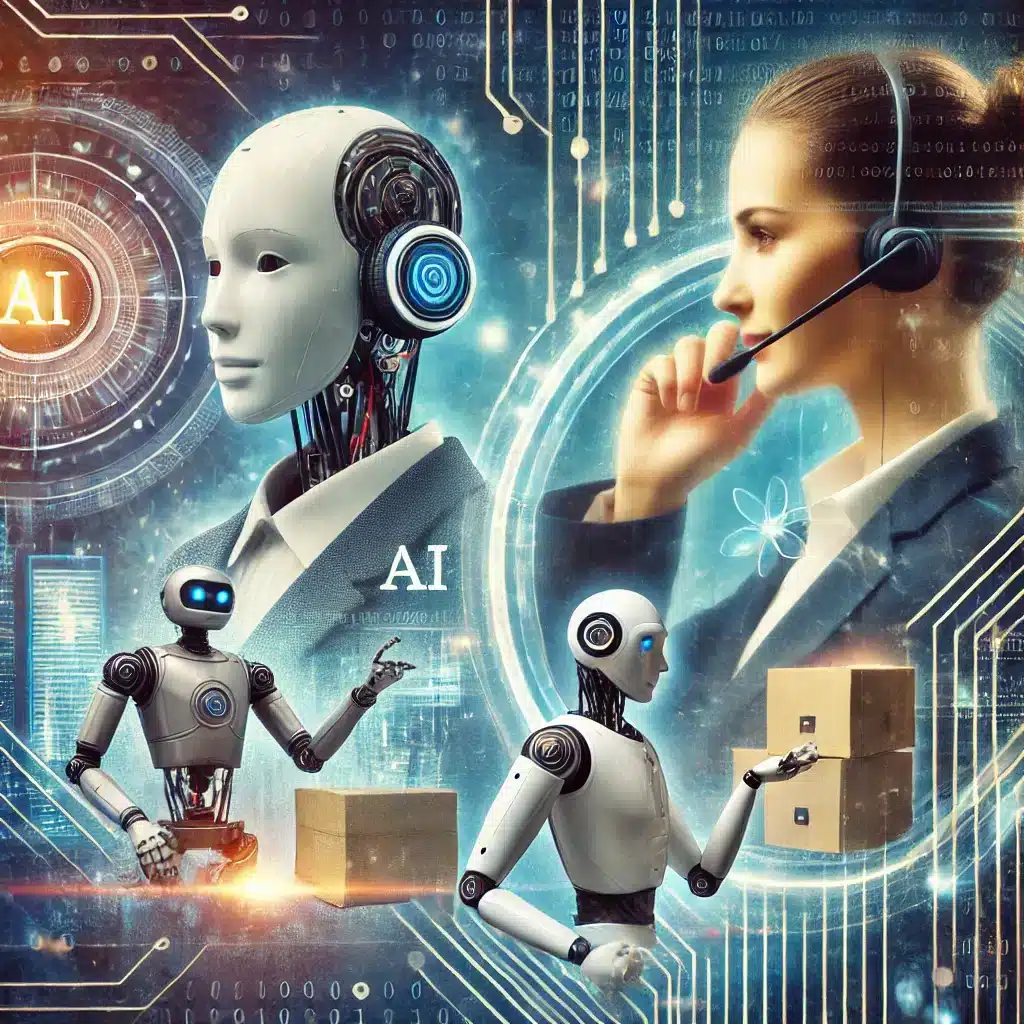In today’s rapidly advancing digital landscape, artificial intelligence (AI) has emerged as a transformative force in various industries. Among its most impactful contributions is its ability to revolutionize creative content creation. AI-powered platforms are breaking traditional barriers, democratizing creative tools, and empowering individuals to transform their ideas into tangible artistic expressions. This article delves into how AI is reshaping the creative content space, highlighting tools like Lumi and exploring the strategic implementation of AI in enhancing storytelling and creative processes.
The Rise of Democratised Creative Tools
Former NFL quarterback Colin Kaepernick has transformed his career from sports to innovative technology with his new AI startup, Lumi. Lumi aims to democratize content creation, allowing anyone to utilize AI technology to create and publish their own stories and comic books.
Moreover, Lumi leverages generative AI technologies to enhance the creative process. Consequently, creators can focus more on storytelling while the platform handles logistics. Thus, Lumi simplifies the path for creators to bring their vision to life independently.
Simplifying Storytelling Through AI
Generative AI technologies lie at the heart of Lumi’s platform, automating complex tasks like illustration and layout design. Creators can now focus entirely on storytelling while the AI manages the technical logistics, offering a streamlined path from ideation to publication. This approach empowers artists, writers, and hobbyists to bring their visions to life independently, reducing reliance on traditional publishing houses or technical expertise.
Breaking Traditional Barriers
AI-powered platforms like Lumi challenge the monopolistic dominance of large corporations in the creative industry. Traditionally, creators faced numerous barriers, including limited access to resources, gatekeeping by publishers, and high production costs. Lumi disrupts this status quo, enabling diverse voices and perspectives to flourish.
A Niche for Independent Creators
With a focus on comic books and graphic novels, Lumi creates a niche for independent creators to thrive. For instance:
- Eliminating Gatekeepers: Creators maintain complete control over their work, fostering originality and authenticity.
- Investor Backing: Lumi’s $4 million funding, backed by Alexis Ohanian and Mariam Naficy, underscores the growing recognition of democratized creative platforms.
By breaking these barriers, AI ensures a more inclusive and dynamic creative ecosystem.
Navigating the AI Landscape
The allure of AI’s potential is immense, as seen in numerous business sectors. However, navigating beyond the hype to find true value in AI applications can be challenging. Therefore, stakeholders must develop strategies to assess AI solutions for feasibility, scalability, and direct applicability. This approach helps in distinguishing genuine innovation from exaggerated promises.
Similarly, many investors have supported AI startups, only to face disillusionment when expectations aren’t met. This sentiment, known as “the trough of disillusionment,” highlights the gap between expectations and reality. Thus, a critical evaluation of AI technologies’ practical applications is necessary. According to a study by Gartner, 63% of business leaders struggle to identify actionable AI opportunities.
Strategic Implementation
Effective AI integration requires a problem-solving mindset, prioritizing areas where Artificial Intelligence can deliver measurable improvements. This ensures AI deployment aligns with core business goals rather than being a mere application of the latest tech trends. Listening to customers and evaluating real-world performance plays a vital role in this process. For instance, customer feedback can provide insights into the effectiveness of AI solutions.
Prioritizing Core Objectives
AI implementation should begin by identifying areas where it can deliver measurable improvements. For instance:
- Efficiency Gains: AI tools streamline content creation, reducing time-to-market.
- Customer-Centric Design: Listening to user feedback ensures AI solutions address real-world needs effectively.

Measuring Impact and Value
To see a return on investment (ROI) from AI technologies, establishing robust metrics is crucial. These metrics should cover efficiency improvements, cost savings, and customer satisfaction. Thus, continuous monitoring helps adapt strategies to ensure ongoing value from AI investments. This approach allows businesses to move beyond initial boosts and achieve long-term sustainability and scalability.
In summary, navigating AI’s hype cycle requires a strategic and practical approach. By focusing on practical applications, rigorous evaluation, and constant adjustments, businesses can realize lasting benefits from AI technologies. Consequently, this ensures alignment with the phases of enlightenment and productivity.
he Future of AI in Creative Content Creation
As AI technologies mature, their role in creative industries will expand, offering more sophisticated tools and solutions for creators.
Beyond Storytelling: Advanced Applications
- Virtual Collaborations: AI tools can facilitate remote collaborations among creators, bridging geographical barriers.
- Interactive Narratives: Advanced generative AI could enable personalized, interactive storytelling experiences for audiences.
Ethical Considerations
With great power comes responsibility. The growing use of AI in creative industries necessitates discussions around ethics, data usage, and intellectual property rights. Platforms like Lumi must ensure transparency in how AI-generated content is attributed and used, fostering trust among creators and audiences alike.
The Role of AI in Personalizing Creative Content
AI’s ability to understand and process large sets of data enables creators to personalize content in ways previously unimaginable. Personalization is no longer limited to marketing and customer experience but has become a crucial element in the creative process itself. By using AI tools, creators can tailor content to suit individual tastes and preferences, making their work more relatable and engaging to diverse audiences.
Customizing Content for Diverse Audiences
AI-powered platforms like Lumi allow creators to leverage data insights to understand audience behavior and preferences. For instance:
- Behavioral Analytics: AI tools can analyze how audiences interact with specific types of content—whether they favor certain characters, genres, or narrative styles.
- Adaptive Storytelling: AI can adjust the flow of a story based on audience choices, offering a more personalized reading experience.
This level of personalization not only enhances audience engagement but also fosters a deeper connection between creators and their fans, making content more impactful.
Generative AI and Personalized Art Creation
Generative AI doesn’t just stop at content recommendations or story flow adjustments. It also extends to art and design, allowing creators to generate unique visual assets tailored to their personal style or project needs. For example:
- AI-Generated Illustrations: AI tools can create illustrations or comic book panels based on specific themes or emotions, adapting the artwork to the narrative’s tone.
- Automated Style Matching: For artists, AI can mimic different artistic styles, enabling creators to experiment with various looks without starting from scratch each time.
With AI-driven personalization, creators can enrich their content, giving each piece a unique touch that resonates with their target audience while enhancing their creative process.
Enhancing Collaboration Through Personalized AI Tools
Personalized AI tools don’t just empower individual creators but also enhance collaboration. By tailoring AI capabilities to meet the needs of each creator, teamwork becomes more effective. For example, AI can:
- Collaborate in Real-Time: AI-powered tools allow multiple creators to work on a project simultaneously, suggesting edits or improvements based on their individual preferences and skills.
- Streamline Idea Generation: AI can act as a creative assistant, offering content suggestions, plot twists, or new character designs based on a team’s collaborative input.
In this way, AI doesn’t just serve as a tool for individual creativity but also helps facilitate more productive and efficient collaborative efforts among teams working on large-scale creative projects.
Conclusion
AI is redefining the landscape of creative content creation, offering unprecedented opportunities for innovation and expression. By democratizing access to powerful tools, platforms like Lumi empower creators to overcome traditional barriers, paving the way for more diverse and impactful narratives.
As AI technologies continue to evolve, their integration into creative workflows will not only enhance efficiency but also enrich the quality and accessibility of content. However, achieving long-term success requires a balanced approach that combines innovation with ethical considerations, ensuring AI serves as an enabler of creativity rather than a disruptor of its authenticity.
In embracing AI, creators and businesses alike can unlock new dimensions of storytelling, transforming the way stories are conceived, crafted, and consumed in the digital age.
FAQs:
1. What is AI’s role in content creation?
AI plays a significant role in modern content creation by automating routine tasks, offering personalized insights, and enhancing creative processes. Tools like AI chatbots, generative AI, and machine learning algorithms help creators streamline content production, customize their work for target audiences, and optimize storytelling. By leveraging AI, creators can focus on the creative aspects while technology handles logistical details.
2. How does AI democratize content creation?
AI democratizes content creation by making powerful creative tools accessible to a wider range of people, not just established creators or large companies. Platforms like Lumi, powered by generative AI, allow anyone to create and publish their own stories, graphic novels, and comic books. These tools reduce barriers to entry, giving people the resources and technology to bring their creative ideas to life independently.
3. How can AI enhance the creative process for independent creators?
AI enhances the creative process for independent creators by automating repetitive tasks, analyzing trends, and personalizing content. Creators can use AI to handle logistical aspects, such as managing project timelines or editing, allowing them to focus more on the creative and storytelling elements. Additionally, AI can provide insights into audience preferences, helping creators tailor their work to resonate with their target audience.
4. What are the benefits of AI in storytelling?
AI tools help storytellers by analyzing audience data, suggesting plot ideas, and even generating content based on the storyteller’s vision. AI can help refine narratives, detect pacing issues, and predict the success of story elements, ultimately allowing creators to create more compelling and engaging stories. Furthermore, AI can offer real-time feedback and improvements, making the storytelling process more efficient.



